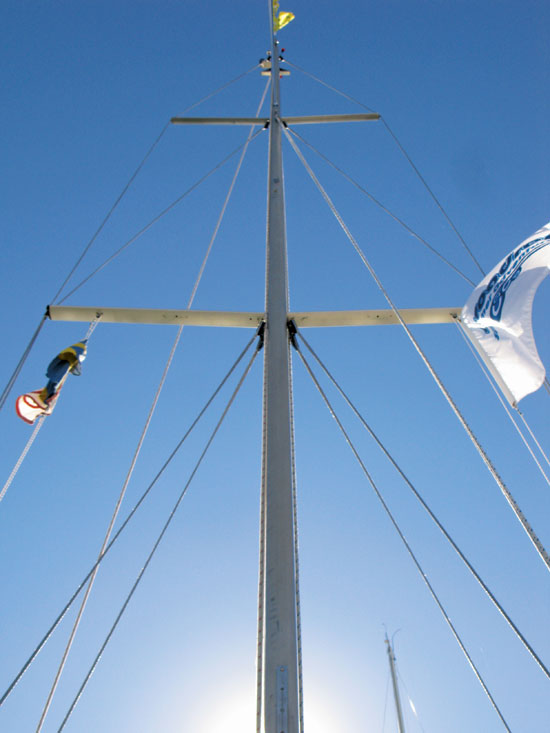
Last month we started looking at sailboat rigging (Sail Rig Inspection – A Quick How To), namely how to inspect it to ensure that you enjoy your days on the water worry-free. Once sure that the rig is sound, you can focus on making it perform, and that’s where we pick up this month – sail rig tuning.
A Quick How To on Sail Rig Tuning
A complete sail rig tune involves a static tune at the dock AND a dynamic tune under sail.
How to do the Static Sail Rig Tuning
The static tune ensures everything is straight and true, while the dynamic sail rig tune sets it all up while the boat is under load.
TIP: Always grease and mark turnbuckle threads before adjusting them (to lubricate and establish a starting point).
At the dock, de-tune the athwartships shrouds – slacken upper shrouds more than the lowers. If the yacht has a backstay adjuster, ease it off completely.
Ensure that the mast is standing true by running a metal measuring tape up the sail track with a spare sail slide – from the masthead, measure down to the port and starboard chainplates. If the measurements aren’t equal, carefully adjust the upper shrouds to tilt the mast to port or starboard.
By hand, take up the shrouds symmetrically, uppers first. Sight up the mast track after each adjustment to ensure the mast remains ‘in column,’ without any bends. It’s amazing how accurate your eyes are in this case – trust them. A bend to port at the spreaders, for example, requires more tension on the starboard lower shroud, less on the port.
With large wrenches, carefully tighten the turnbuckles (again, symmetrically, uppers first) to the working shroud tensions. Uppers should be tightest – lowers and intermediates slightly less so. Always use the same arm when checking tension – touch is sensitive enough to notice an unbalance. An over-tensioned rig can indeed bend a fiberglass hull, so be conservative.
How to do the Dynamic Sail Rig Tuning
For the dynamic tune, sail close-hauled in a moderate breeze (12-18 kts). The leeward shrouds should be loose but not slack. Snug them up by hand (count your turns), then tack and do the same on the other side. The mast should remain in column throughout – new bends are best resolved back at the dock.
TIP: Backstay tension determines headstay tension – the jib luff should not have more than 12-18 inches of ‘deflection’ off centerline (most furlers will not furl smoothly if there is any more).
Secure each turnbuckle with new cotter pins, and re-check the rig each time you sail.




